Podcast Marketing: How to Promote a Podcast In 2021 [Guide]
What’s the best way to promote your new podcast in 2021? In this guide on podcast marketing, we give you all the best practices and examples you’ll need. Inside, you’ll find... Read More...
An audience wants to know your brand, trust you, and hopefully like you before they buy from you.
Content marketing can help you boost the “know, like, trust” factor.
Content marketing really means any content created to build an audience and generate leads, and this includes content such as social media posts, blog posts, videos, podcasts, and much more.
Even though content creation is essential, many marketers skip over the crucial steps you need to take before you start creating that content.
Here are 8 content marketing tips to keep in mind while you create content for your brand and audience.
Stay tuned until the end for the one task you need to do after you’ve published content.
An audience persona is a personal profile that represents your audience. A persona is essentially a character that includes their name, age, psychographics, demographics, and how you can help them.
Understanding a persona is critical to creating content that makes your audience know, like, and trust you.
Some businesses need only one audience persona, but don’t be surprised if you have multiple personas to cover your entire audience, especially if you have various services or products.
If you’ve never explored your audience personas before, you may want to consider surveying your current audience.
This will give you a good idea of whether the people you are trying to reach are following you, and who truly makes up your following.
Here are things you may want to include in your audience persona:
Let’s now look in detail at the process of creating an audience persona using HubSpot’s Make My Persona tool.


To find who your target audience is, especially if you’re just starting out, you may have to test different audiences.
Having said that, this tool helps you create context for your company and learn about your ideal audience.
This helps you engage with your audience, understand their needs and goals, and ultimately helps your company set a content strategy that will be relevant to your target audience.
The steps of creating your audience or buyer persona are easy and can even be fun to follow.
Below, I’m showing you a few screenshots of Hubspot’s website that will make it a bit more clear.
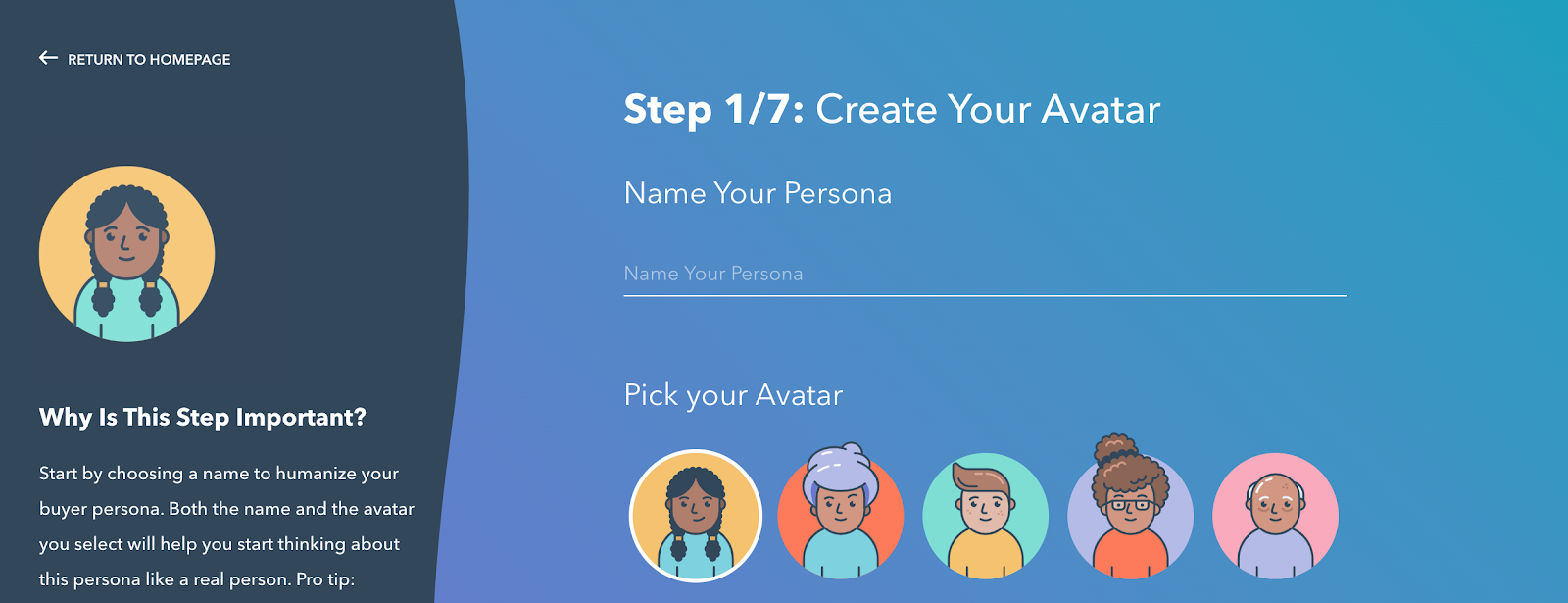

The first step is to create your avatar and name.
This way you humanize your persona and you start to consider the fact that your target audience and potential audience are real people and not just users behind screens that don’t require interaction.
Other steps include providing information about their demographic traits, their business, as you can see at the screenshot below, the characteristics of their job, and so on and so forth.
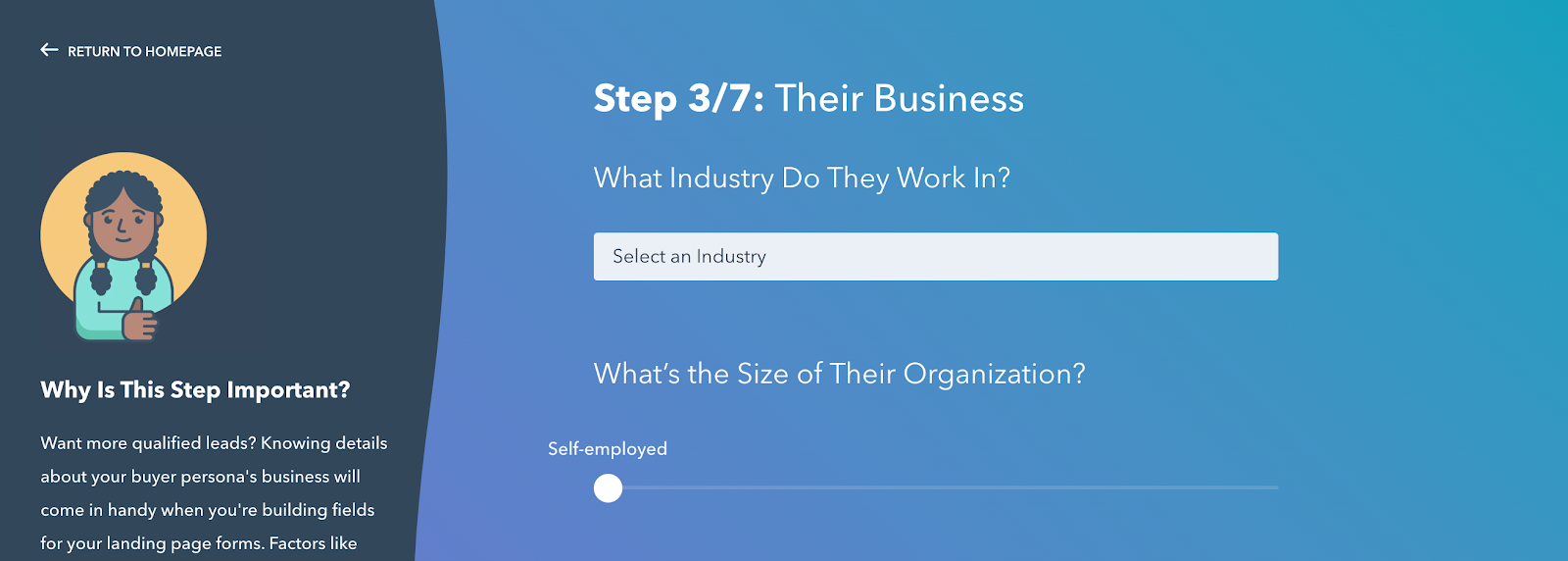

All these steps are essential in making you understand your audience and therefore manage to successfully give them the content, services, and products they might need.
Another approach in relation to understanding the characteristics of your audience comes from Rand Fishkin.
Rand supports the idea that the content we produce should not resonate only with our target customers, but also with the industry leaders and thought experts in our niche.
See below:


What does that mean?
It means that companies have different audiences and content marketers should make sure that they include what Rand calls “potential amplifiers”, bloggers and influencers, into their digital marketing strategy.
Simply put, in order for your content efforts to succeed, you need to make content for different audiences and try to talk to all of them using different and unique ways.
Picture the content marketing funnel like a real-life funnel.
The top stage – Awareness – attracts the most people. As you move through the funnel, the most engaged audience will reveal themselves.
You’ll notice that your audience will get smaller as you go down the funnel, but don’t stress! Since not every person will become a paying customer – wouldn’t that be a dream? – you’re really narrowing it down to the most qualified leads.
Let’s go over the three stages of the content marketing funnel in more detail, and how you can use this information to create content.
People in this stage are aware that they have a problem and are looking for a solution. This is when people interact with the first piece of content from you, which is typically educational content.
Content in this stage is easily accessible to the audience and is highly-informative. Some examples of content include blog posts, social media, podcasts, and videos.
Once people are aware of your company, they will start interacting with your brand more. This is the perfect stage to begin introducing your services while still producing highly informative content.
To move your audience further down the funnel, you’ll need content that’s more personalized and persuasive. You may also ask for a small commitment like an email address. Some content in this stage includes webinars, email marketing campaigns, or E-books.
If your goal is to make a sale or gain a subscriber, this is where that happens. You need to create content that shows you’re a superior brand and are the best solution to solve your customer’s problem.
Content at this stage has a clear call-to-action that results in an audience becoming a paying customer or loyal subscriber. Content that helps you at this stage includes demos, customer testimonial videos, and case studies.
Sparktoro gives us a slightly different approach in regards to the marketing funnel which is just as valid.
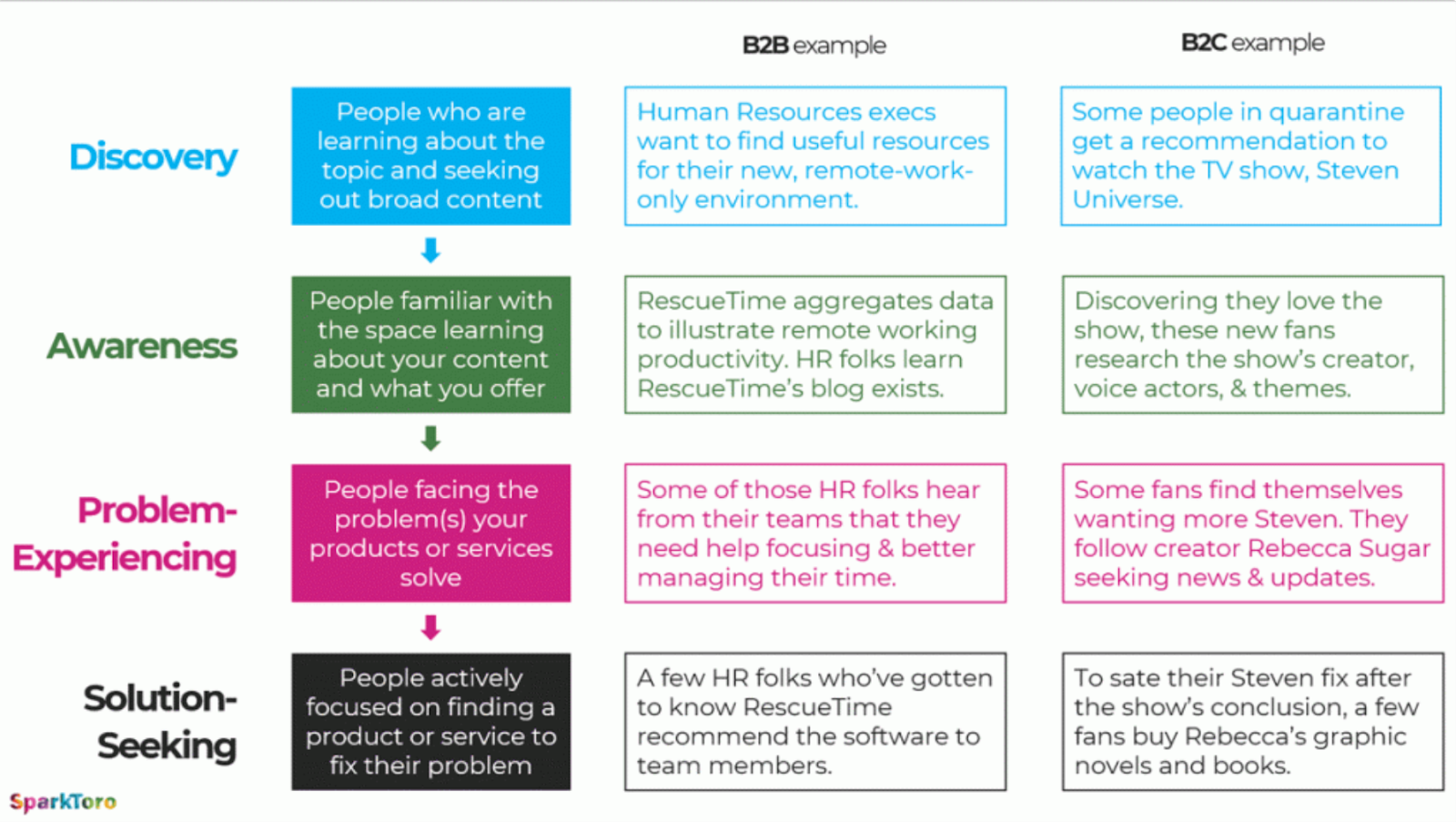

The steps as described in the image above are showcasing the content marketing funnel and how it works on your audience.
It’s important to understand that it’s a long process to pass from the first step where people are browsing through content that can be found online, to the last one where people are actively searching for a solution, engaging with your content and services, and ultimately converting.
I’d like to point out that it’s not right to expect that all people who visit your website, e.g. through a blog post you’ve created, will convert right away and will actively focus on your services to cover their needs.
It takes weeks, and in some cases months, to get someone from inception to customer.
In a few words, by design, the purpose that content serves is way different.
It’s not like PPC, which works right away.
Moving on to the third tip I have for you.
There are many ways to create a content marketing strategy.
A strategy will look different for every company because each audience will most likely want different content.
Let’s go back to the audience persona. Every piece of content that you create will need to cover that persona’s needs.
Take it a step further to address where they are in the content marketing funnel.
This may seem like a lot of work, but try putting yourself in the shoes of your persona, and taking yourself down the funnel from awareness to conversion.
You may even notice a few areas for improvement!
Plus, if your audience responds well to it, you may see an increase in engagement, and ultimately, sales.
There are a few key questions that you need to answer to create a content marketing strategy:
You might want to take the time to do a content audit whilst creating your strategy.
A content audit can help you identify what is performing well, what’s underperforming, gaps in content, and give a chance to brainstorm new content ideas.
What I believe you’ll find very helpful is the Visme content marketing plan template.
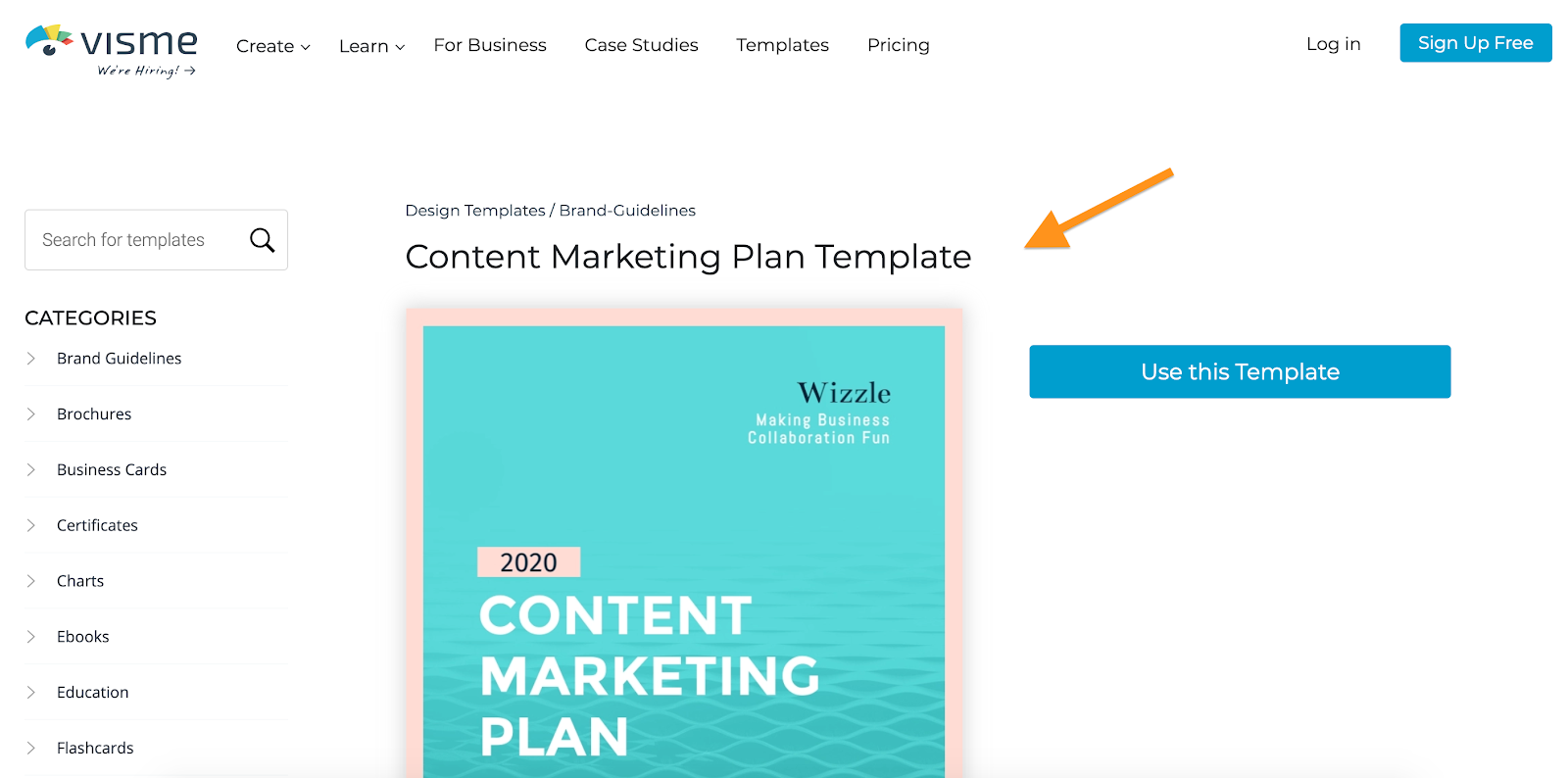

It’s always great and effective to visualize your content and processes.
Also, when you visually document your strategy, you make sure that you’re taking all necessary steps to reach your goals and that you’re making the right content marketing efforts.
Having a strategy is essential because it shows you where you are at and where you want to get to as a business.
According to Tim Soulo:
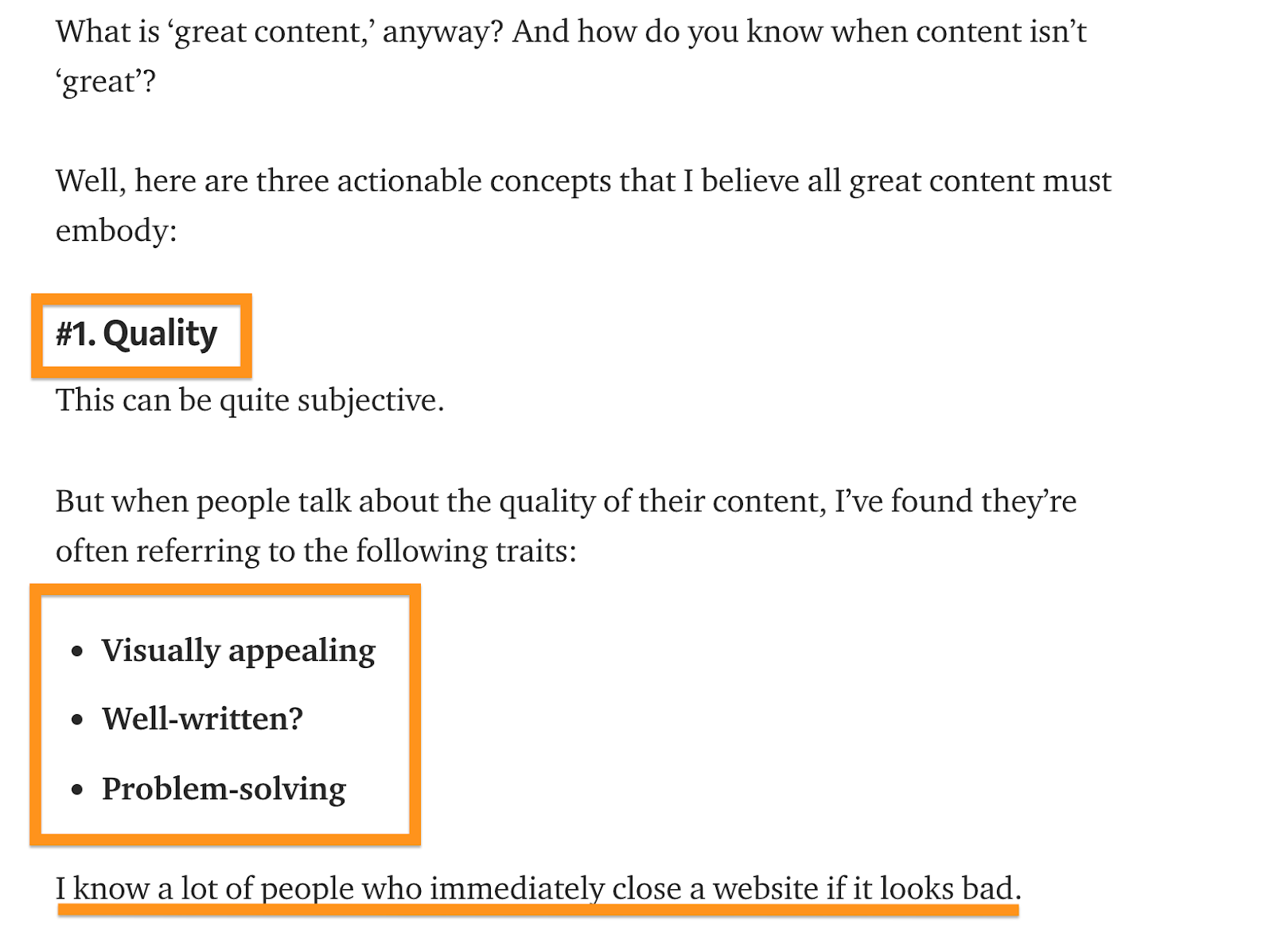

Ahrefs’ strategy and dedication in posting high-quality content on their blog, lead them to generate $50M Annual Recurring Revenue (ARR) being bootstrapped as a company.
In other words, good content should be part of your online marketing strategy.
Try to create the best content for your company and you’ll see that it pays out.
On the graph below, we see the correlation between ARR and the Ahrefs blog traffic.
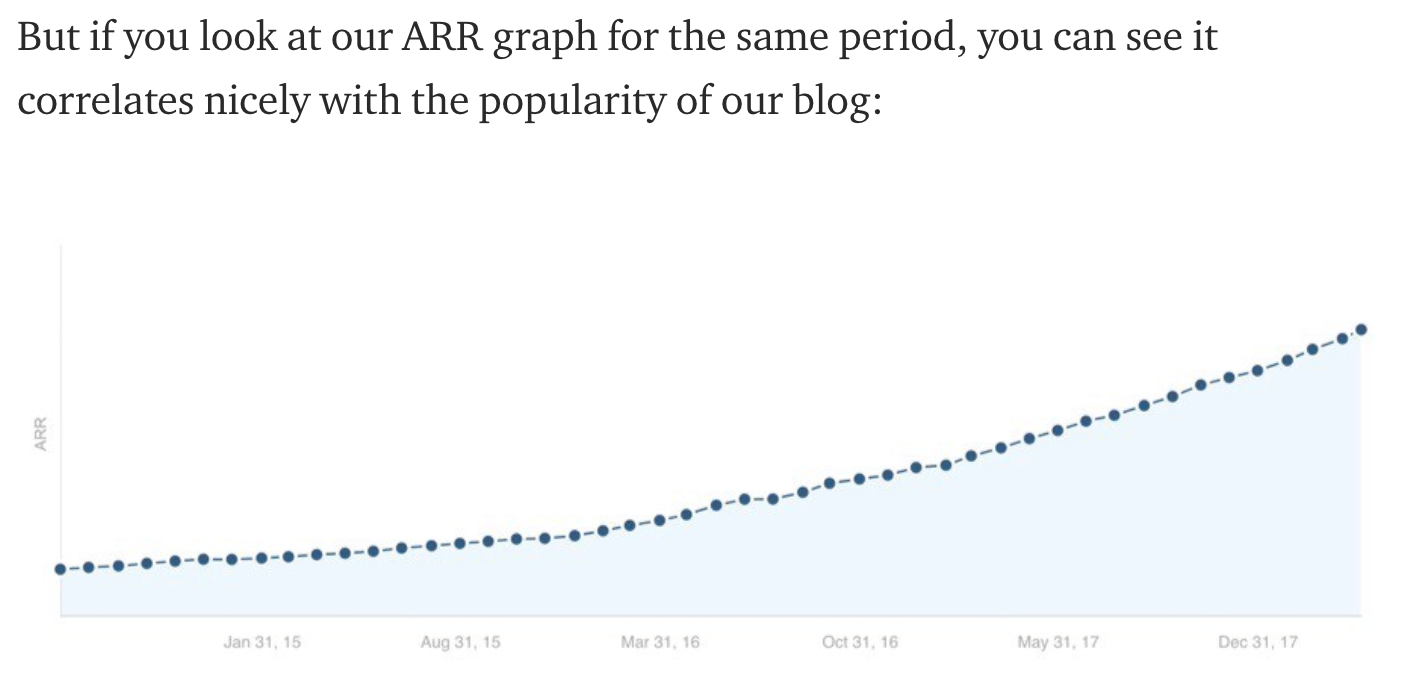

Having a strategy matters, as shown by Tim’s work at Ahrefs, because through it you are more able to convert your company’s popularity and social shares into sales and revenue for your company.
The keyword here is valuable.
Building a loyal audience happens when you are consistently creating educational content that makes a reader say, “I need to read this right now.”
An example of this might be a valuable guide like the following.
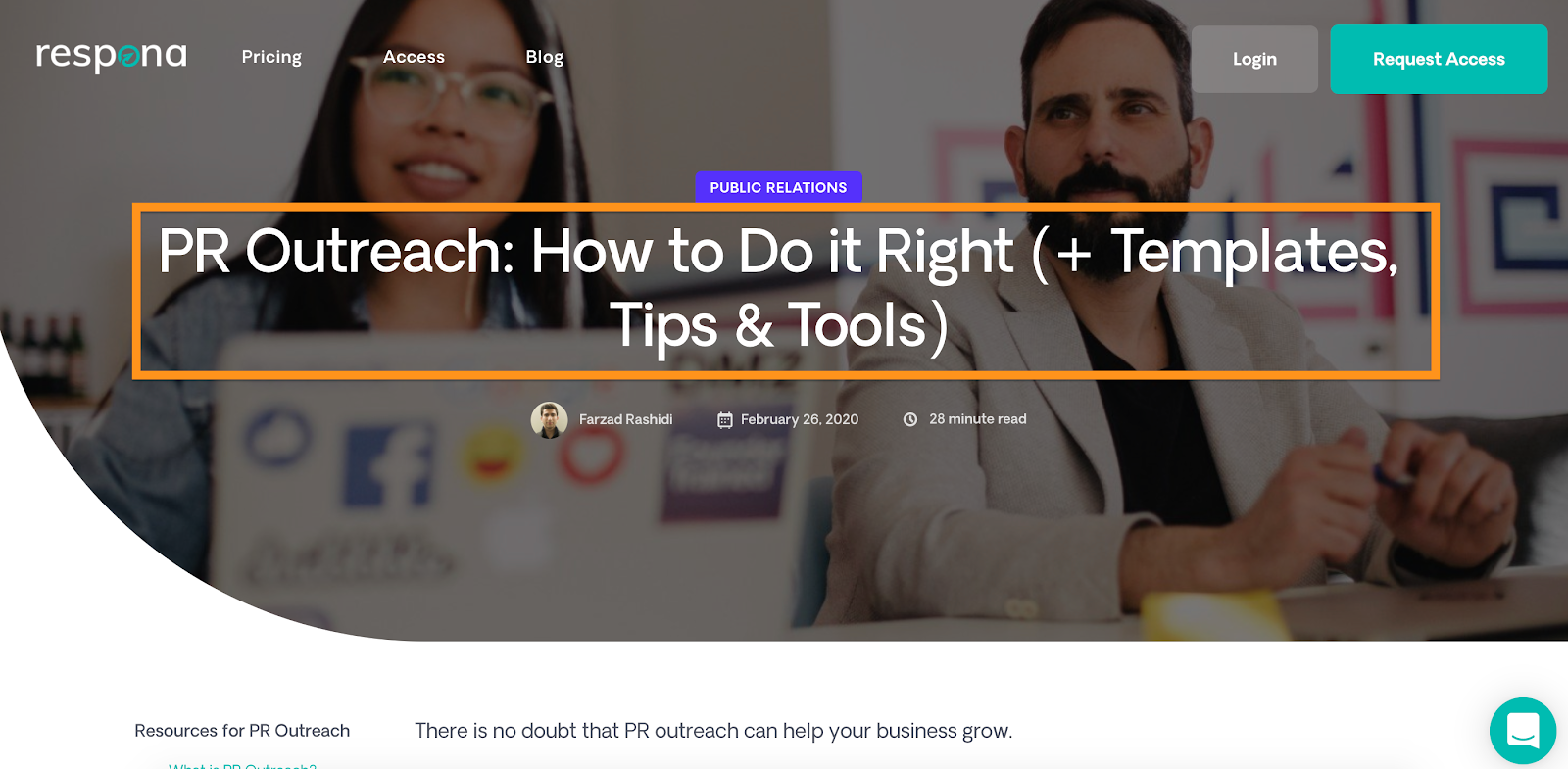

Such a guide passes valuable information on how to do PR outreach while illustrating the value someone can get by using Respona.
It’s a win-win situation!
It gives the reader all the necessary information while promoting the company and their services as well as raising brand awareness.
The central place for publishing content is your company blog, although you could also easily use podcasts or video as your big production piece.
You’ll want to try a variety of content types to keep your audience interested. Here are some ideas:
How do you know if your content is valuable to your audience?
There are a few ways to determine if your audience is interested in what you’re creating in terms of content.
First, you can use keyword research to determine what people are searching for online. You might notice that people are asking questions that you can answer.
Another way to find out what type of questions people are asking is the comment section of your blog.
People will often leave their opinions and questions on your blog posts, which is an excellent opportunity to get inside of their heads. Tools like Disqus can help you monitor your blog comments and increase engagement.
You can also directly ask your audience what type of content they want to consume.
Some popular methods for this include sending a survey to your email list or using polls on Instagram Stories or Twitter.
This option is particularly useful for finding out new topics that you may not have thought about before but should be discussing.
However, you should keep in mind that there’s a vast number of content pieces that get published online everyday.
Backlinko’s content study shows that:
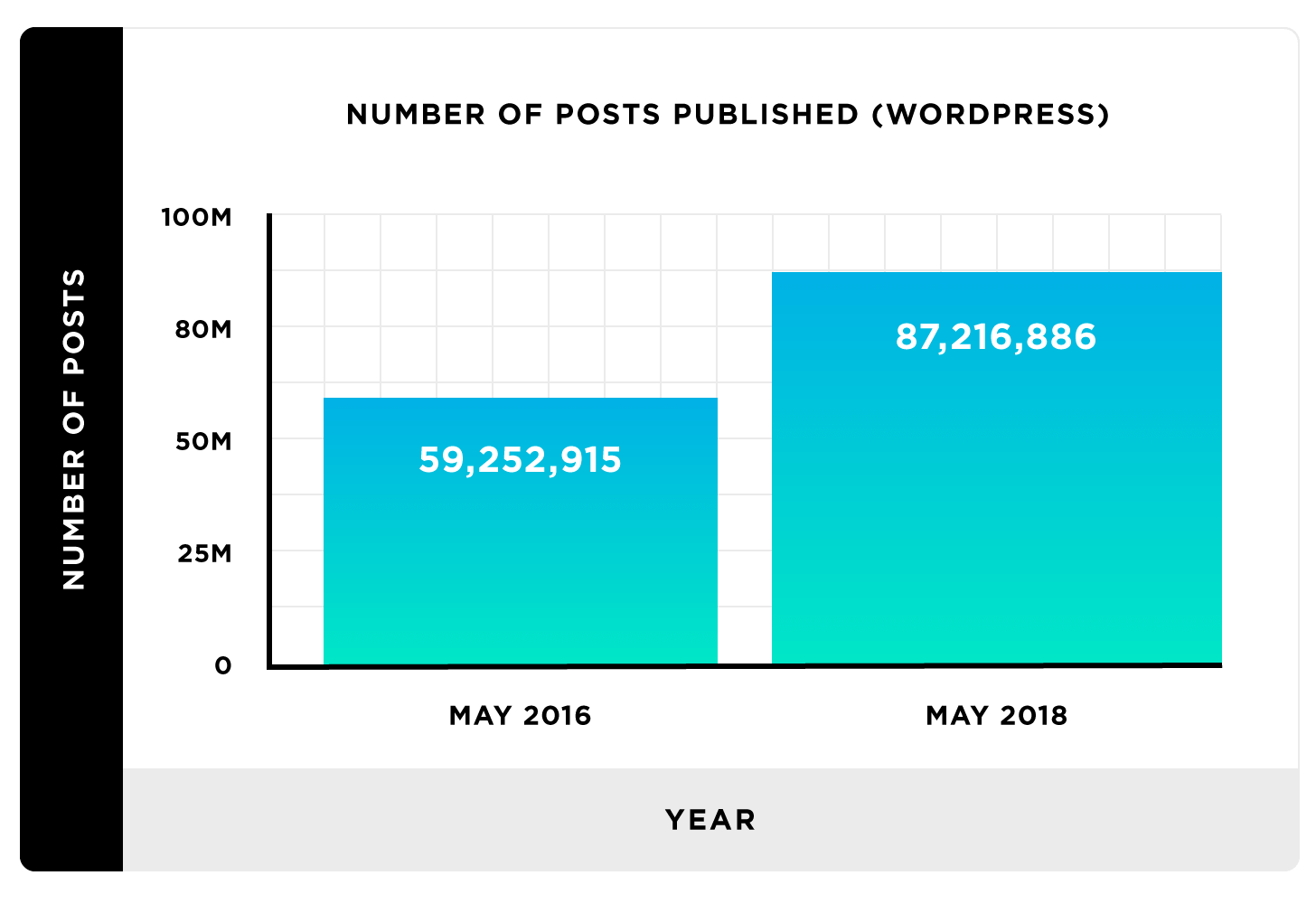

We notice that there’s an increase of over 20 million monthly posts in only two years.
However, the majority of the content that gets published out there are vague and, as a result, most content goes unnoticed.
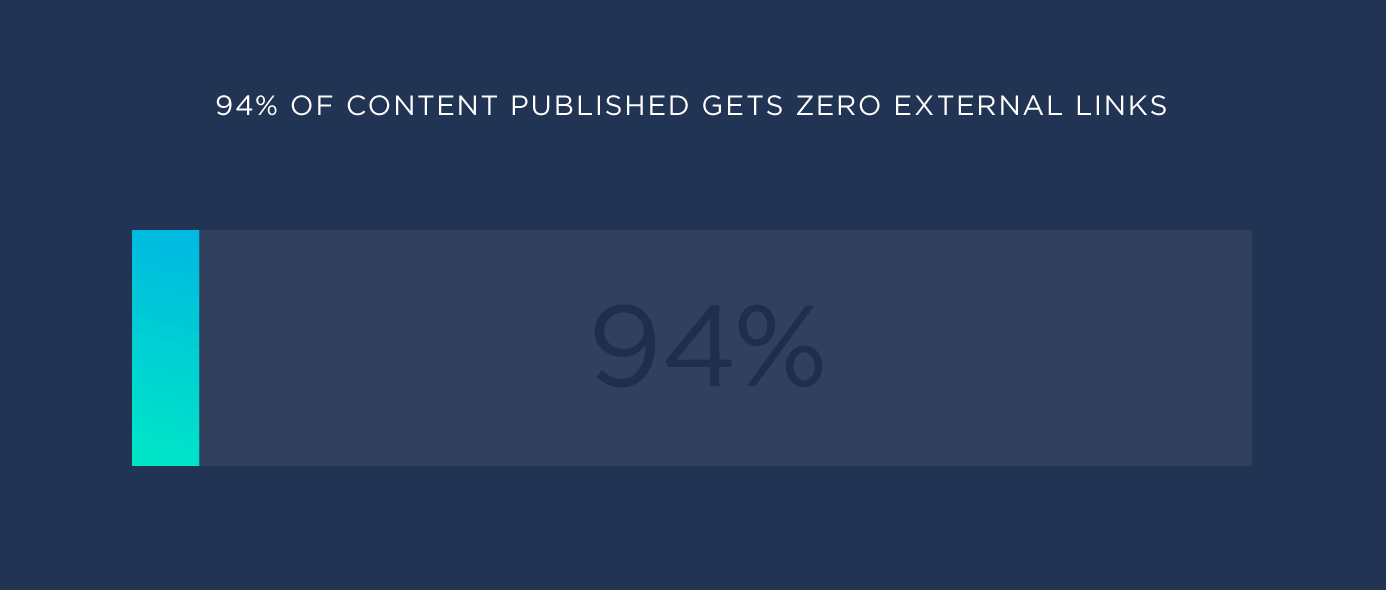

In fact, only a very small percentage manages to get backlinks.
The same applies to social shares.
Either you’re trying to bring some new customers in, or you’re targeting to increase the number of email subscribers, or you simply want to boost your brand awareness; you should always try to prioritize the quality of your content and make it worthy.
Simply put, if your content is not unique and valuable, you won’t manage to move the needle because of the tough competition in the marketplace.
You can’t just hit publish on your blog post and then call it a day. You need to tell the world that your blog post exists and that it’s worth a read!
Otherwise, what’s the point of writing high-quality content at all if no one is going to see it?
There are many ways to distribute and promote your content. You might want to gather your team and brainstorm the best ways to reach new audiences and see what’s worked best in the past.
While you’re brainstorming, consider the three distribution channels: owned, earned, and paid.
Owned: These are channels your company owns and doesn’t need permission from someone else to use. Some examples of these include your website, social channels, and your email list.
Earned: This includes third-parties that promote your content. Usually, you “earn” this promotion and don’t have to pay someone for it to happen. Some ways this happens include social media shares, public relations, and guest blogging.
Paid: You pay to promote your content on other channels. Pay-per-click ads can be a short-cut to getting your content to the first page of Google.
Once you determine which distribution channel will work for your company, you can start focusing on promoting your content. Here are a few ideas to get started:
That’s just a small sample of what you could do to promote your content.
When it comes to promoting your content, you shouldn’t forget that promotion is a necessary part of every company’s content marketing strategy.
You’d think that successful SaaS businesses wouldn’t have to distribute and promote their content.
Our content promotion guide proves that that’s certainly not the case.
Below, we see how high the organic traffic of Ahrefs is.


However, we know for sure that the company is always trying to promote their content.
As we can see, they’re distributing their content on their social media accounts, like Youtube, where they do some brand journalism, sharing stories from Ahrefs’ marketing department.
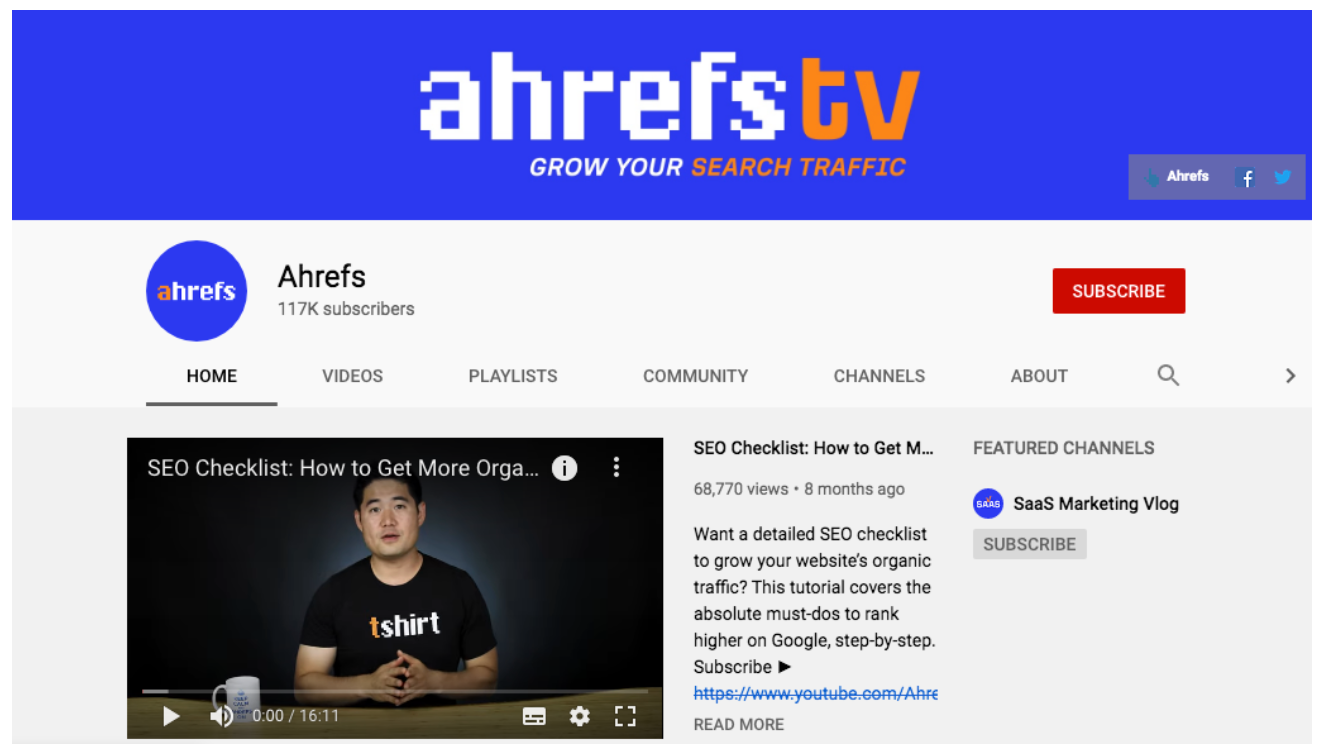

Also, on their Facebook account…
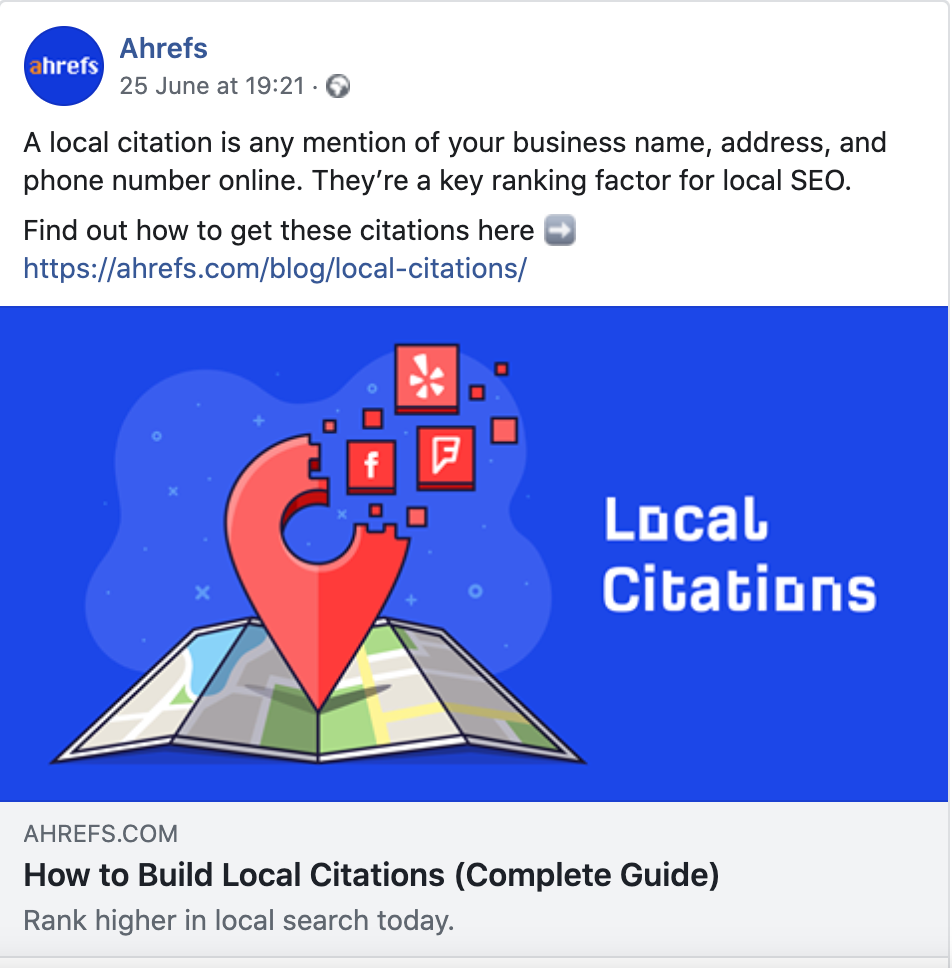

Additionally, they use their blog with in-depth posts, and a number of other platforms.
Moving on down the list of tips I have for you.
When you start an active content marketing campaign, you’ll quickly realize how many projects you’re ending up doing.
A weekly blog post, multiple email campaigns, daily social media posts, and more can lead to getting overwhelmed.
Not to mention that you might lose track of something that you were supposed to post but didn’t.
Content calendars are vital to helping you stay organized. They’re also known as editorial calendars, and their primary purpose is to ensure that you produce consistent content.
Depending on your company, your content calendar will keep track of different things.
Most content calendars will have project timelines, due dates, names of the team member in charge of production, and content details like keywords.
You can use project management tools like Asana or Trello to create a content calendar. Both have free or paid versions.
I want to share Buffer’s Social Blog Calendar as an example.
The calendar helps businesses manage their social media, plan ahead, track performance, reschedule, and do all sorts of organizational stuff that keep track of your activities. For the best results on social media, you can also use alternative tools like Hootsuite, Sprout Social, etc.
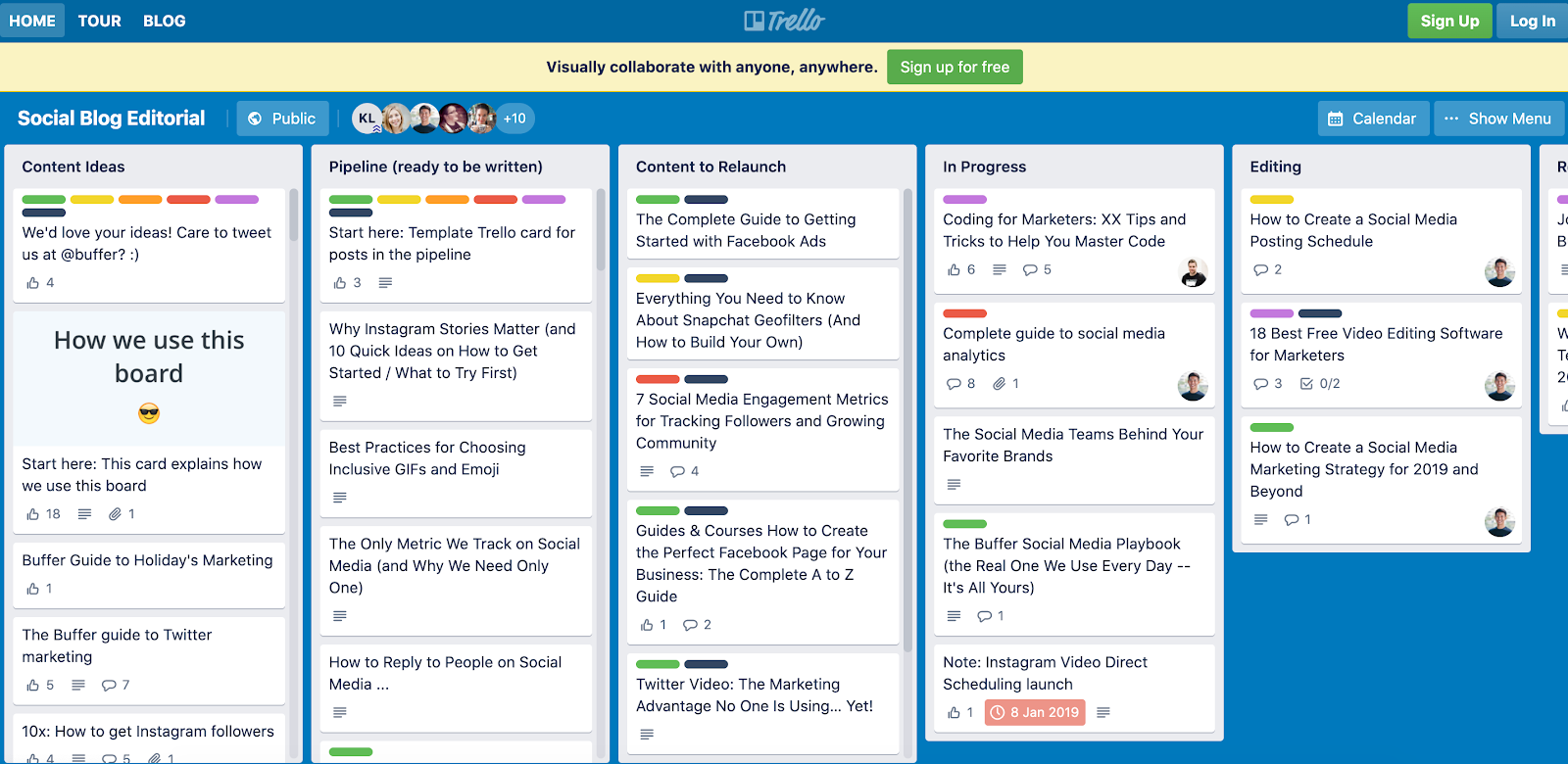

We could say that, by being organized, Buffer has managed to get to the point where it is today in terms of brand awareness and organic traffic.
See their organic traffic below:


If your company already uses Google Drive, you may consider using Google Sheets to create your content calendar.
Besides organization, content calendars will also help your team maintain accountability because they let you know when specific content is due.
Your team will have better time management and it’ll possibly even lower their stress.
One mistake that marketers make is to assume that every piece of content they post has to be new and different.
Your audience probably won’t notice if you post a quote from a podcast published three months ago, plus, it’s probably still relevant! Repurposing your content allows you to share the same message in new and creative ways.
Something that has worked well in one format, e.g. a blog post, can be repurposed into another format like an infographic and be used to further boost your content efforts.
Let’s talk about how to repurpose a podcast episode, for example. You can create many different new types of content from just one episode, such as:
One of the most significant benefits of repurposed content is that it saves your team’s time and energy.
Creating new content 24/7 can be an exhausting task, so repurposed content can help your team redirect their energies into other essential projects.
A good way to understand your evergreen content and repurpose it is by taking a look at the top pages on a website in terms of social shares numbers and total number of backlinks.
As depicted in the screenshot below, we can see which Ahrefs pieces have performed better than others.
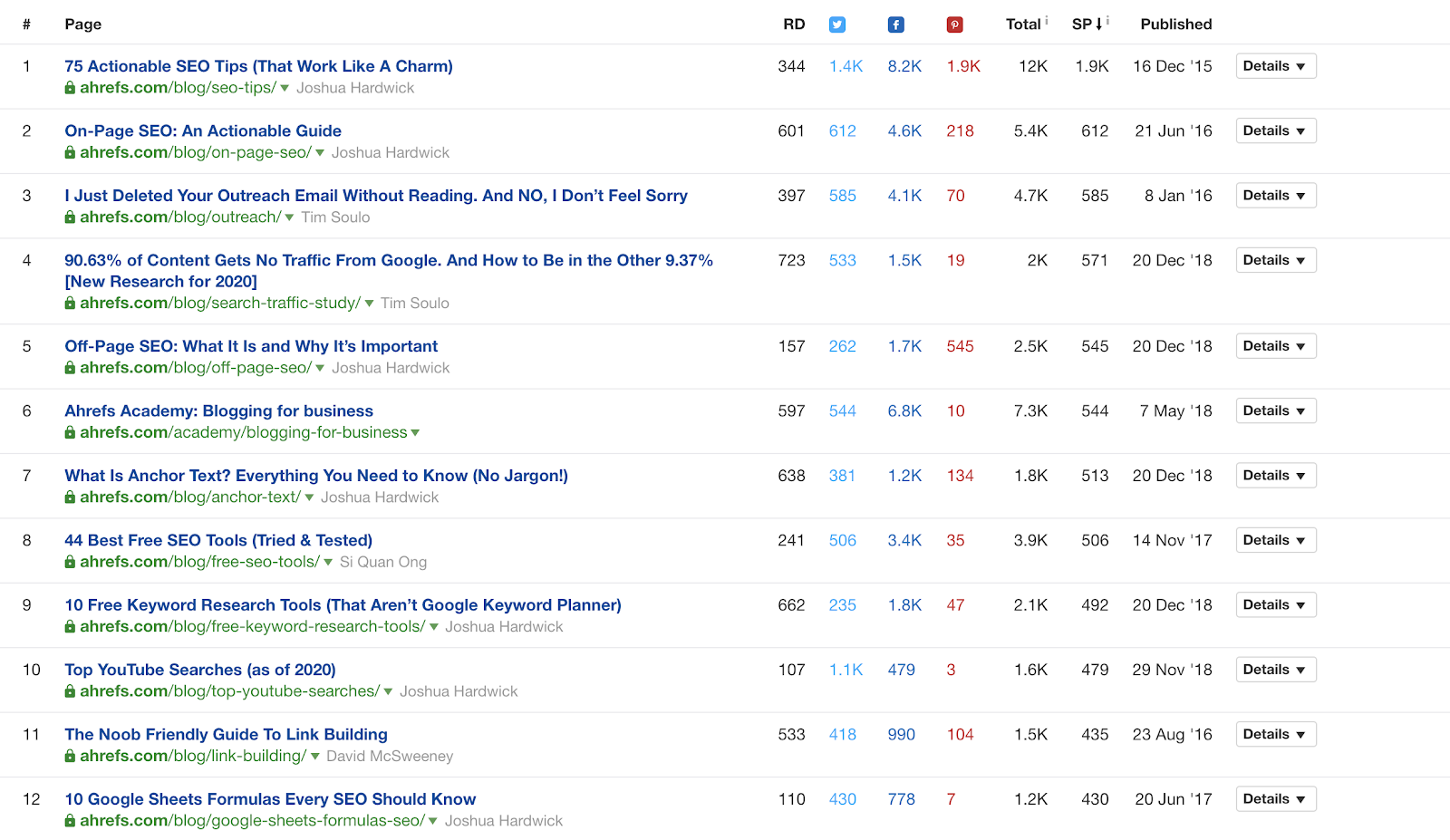

For the sake of example, let’s say that if Ahrefs was to repurpose some of their good content; they should have the above list as a guide to which pieces are worth repurposing.
You can make use of some pieces of content that you’ve already worked on and you know that they’ve been effective in terms of performance.
This way, you’re saving yourself and your business time and effort by repurposing great content that can be shared multiple times within different contexts.
Keeping track of the data from your content is the most easily missed step yet is also the most important. A 2018 study showed that 65% of B2B marketers don’t measure ROI.
If you didn’t create goals while creating a strategy, now is the time to do it.
Perhaps you were looking to increase your overall open rate for email marketing.
Choose a specific email open rate to aim for within a particular time frame, and then you can analyze if you reach that goal.
You can track likes, comments, and reach if you’re looking to increase social media awareness.
This data can help you pinpoint what content your audience likes or doesn’t like that you produce.
I know that most content creators don’t feel comfortable measuring their performance.
However, it’s a necessary task.
Here’s some metrics you should try to keep track of:
You can also use heatmaps to see where your visitors spend the most time on and what areas need to be optimized.
Keep track of the data in a spreadsheet.
You can have a team member update it daily, weekly, or monthly.
Once you’ve had a few months of data, you can then begin to notice trends. These trends can help you to determine if your efforts are working or need to improve.
Content marketing is more than whipping up a quick blog post and then hitting “Publish.”
You need to consider if this is the content that your audience persona needs at their current stage in the content marketing funnel. This can make a massive difference between someone becoming a paying customer or not.
You need to stay organized by creating a content calendar that tracks your new content and repurposes your old content.
Don’t forget to consider all facets of how to promote your content too.
Most importantly, keep track of the data surrounding your content. You may be surprised to find what your audience engages with the most. Then, you can create similar material to keep boosting your engagement rate.
Keeping track of your content creation and data is a lot of work, but the effort can have huge rewards for building an audience and earning their trust.
No spam, no BS, unsubscribe at any time.